Tariff war : Is China the main culprit ?
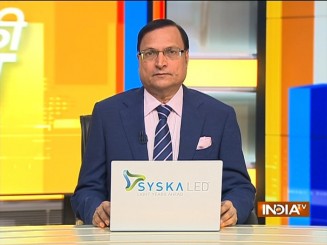 The United States has decided to slap an unprecedented 104 per cent tariff on all goods imported from China after President Donald Trump’s 24-hour ultimatum to China to withdraw its retaliatory 34 per cent tariff on US goods ended. Trump, in a post on his social media platform Truth Social, wrote, “China also wants to make a deal, badly, but they don’t know how to get it started. We are waiting for their call.” On Wednesday, China’s top leaders met to decide on measures as the trade war with the US escalated. The question is: Who is responsible for this? China has called on other countries to join hands to fight this tariff war with the US and force America to follow WTO (World Trade Organization) rules. But is Trump solely responsible? The roots lie in China. Trump is right when he says that American manufacturing industry has declined due to China and more than 6 million people have lost their jobs. America had become dependent on China for goods like microchips and semiconductors. It is also a fact that when China applied to join the WTO, the US supported China despite opposition from American trade unions. The then US President Bill Clinton announced China’s membership in WTO and gradually China captured most of the world market. In 2001, when China joined WTO, it was the world’s 7th biggest exporter, but eight years later, in 2009, China became the world’s largest exporter. In 2001, nearly 4 crore ship containers used to leave from China and come back, and this figure rose to 8 crore in 2006 and 13 crore in 2011. China deliberately kept itself in the category of developing nations to corner most of the advantages. China gives big subsidies to its companies while keeping its own market closed to other nations. It refrains from exporting raw materials and parts used for manufacturing electronics and other consumer goods. By doing this, China forces other countries to buy its products and leaves no scope for them to either produce or assemble them in their own country. Using this method, China captured practically the entire world market. The impression today that is being sought to be created is that the US has fired the first shot in the tariff war against China. But if you look at the origins of tariff and trade war, you will find that China is equally responsible for this. No country other than India knows this better. Chinese goods flood Indian markets at cheaper prices and they have caused a huge setback to Indian manufacturing sector. This began 24 years ago, when China became a member of WTO and set the narrative for low-cost manufacturing, setting up huge factories, forcing millions of workers to work at low wages for long hours and then dump these goods on the rest of the world. I remember, in 2003, I was in New York, and in the hotel where I stayed, almost every item was Made in China. China had practically occupied the American market and nobody opposed it at that time. Manufacturing in big countries like India and the US had to face heavy losses because of unfair trade practices by China. On the other hand, China achieved massive growth, but at the cost of fair play. It is unfortunate that nobody in India opposed this. Countries like India quietly followed WTO rules while China continued to damage our economy. At that time, our government was busy glorifying China for its swanky roads and huge factories. In 2014, when Narendra Modi became Prime Minister, questions were raised about China’s unfair trade practices. ‘Make in India’ mission was launched and China was challenged in the area of manufacturing. But most of the countries of the world remained silent. Today, the situation has come to such a pass that China trades with 181 countries of the world, out of which 150 countries are facing trade deficit against China. There are only 43 countries whose trade deficit against China is slightly above 5 per cent. Economies like China, the US, UK, European Union and Mexico are in huge trade deficit against China. While China is responsible for this tariff war, the US and Europe are equally responsible for allowing China to have its way.
The United States has decided to slap an unprecedented 104 per cent tariff on all goods imported from China after President Donald Trump’s 24-hour ultimatum to China to withdraw its retaliatory 34 per cent tariff on US goods ended. Trump, in a post on his social media platform Truth Social, wrote, “China also wants to make a deal, badly, but they don’t know how to get it started. We are waiting for their call.” On Wednesday, China’s top leaders met to decide on measures as the trade war with the US escalated. The question is: Who is responsible for this? China has called on other countries to join hands to fight this tariff war with the US and force America to follow WTO (World Trade Organization) rules. But is Trump solely responsible? The roots lie in China. Trump is right when he says that American manufacturing industry has declined due to China and more than 6 million people have lost their jobs. America had become dependent on China for goods like microchips and semiconductors. It is also a fact that when China applied to join the WTO, the US supported China despite opposition from American trade unions. The then US President Bill Clinton announced China’s membership in WTO and gradually China captured most of the world market. In 2001, when China joined WTO, it was the world’s 7th biggest exporter, but eight years later, in 2009, China became the world’s largest exporter. In 2001, nearly 4 crore ship containers used to leave from China and come back, and this figure rose to 8 crore in 2006 and 13 crore in 2011. China deliberately kept itself in the category of developing nations to corner most of the advantages. China gives big subsidies to its companies while keeping its own market closed to other nations. It refrains from exporting raw materials and parts used for manufacturing electronics and other consumer goods. By doing this, China forces other countries to buy its products and leaves no scope for them to either produce or assemble them in their own country. Using this method, China captured practically the entire world market. The impression today that is being sought to be created is that the US has fired the first shot in the tariff war against China. But if you look at the origins of tariff and trade war, you will find that China is equally responsible for this. No country other than India knows this better. Chinese goods flood Indian markets at cheaper prices and they have caused a huge setback to Indian manufacturing sector. This began 24 years ago, when China became a member of WTO and set the narrative for low-cost manufacturing, setting up huge factories, forcing millions of workers to work at low wages for long hours and then dump these goods on the rest of the world. I remember, in 2003, I was in New York, and in the hotel where I stayed, almost every item was Made in China. China had practically occupied the American market and nobody opposed it at that time. Manufacturing in big countries like India and the US had to face heavy losses because of unfair trade practices by China. On the other hand, China achieved massive growth, but at the cost of fair play. It is unfortunate that nobody in India opposed this. Countries like India quietly followed WTO rules while China continued to damage our economy. At that time, our government was busy glorifying China for its swanky roads and huge factories. In 2014, when Narendra Modi became Prime Minister, questions were raised about China’s unfair trade practices. ‘Make in India’ mission was launched and China was challenged in the area of manufacturing. But most of the countries of the world remained silent. Today, the situation has come to such a pass that China trades with 181 countries of the world, out of which 150 countries are facing trade deficit against China. There are only 43 countries whose trade deficit against China is slightly above 5 per cent. Economies like China, the US, UK, European Union and Mexico are in huge trade deficit against China. While China is responsible for this tariff war, the US and Europe are equally responsible for allowing China to have its way.
Mudra loans : Modi’s silent revolution
Prime Minister Narendra Modi on Tuesday said self-reliance is the key to India’s endeavour to become a developed country by 2047. During an interaction with Mudra beneficiaries on the occasion of 10th anniversary of this scheme, Modi said, “a silent revolution” named Pradhan Mantra Mudra Yojana was launched in 2015 to provide collateral-free microcredit of up to Rs 10 lakhs to non-corporate, non-farm small and micro-entrepreneurs. In the last ten years, Mudra loans were given to 52 crore beneficiaries and Rs 33.5 lakh crore loan was disbursed. Now, the government has increased the loan limit to Rs 20 lakh under new category ‘Tarun Plus’ for those who availed and repaid previous loans. Modi said, while opposition leaders allege that this is a government for the rich, the fact shows Rs 33 lakh crore were disbursed to small and micro-level entrepreneurs, thus creating job opportunities and helping economic growth. I have myself seen those days when it was impossible for poor people to get loans from banks and they had to take loans from moneylenders at exorbitant rates. Opening bank accounts and disbursing PM Mudra loans without collaterals is nothing short of a revolution. Anybody can change his or her life by taking interest-free loans and start entrepreneurships. This is a silent revolution where the economically weaker sections can prosper and we can reduce our dependence on imports by making products in India. This is nothing short of a “swadeshi revolution” and this was the message that Modi sought to convey.
Mahua Moitra Ko Gussa Kyun Aata Hai?
Internal squabbles among Trinamool Congress MPs came out in the open on Tuesday when BJP IT cell chief Amit Malaviya circulated WhatsApp messages and video showing TMC MPs Kalyan Banerjee, Kirti Azad and Mahua Moitra embroiled in a nasty quarrel. The immediate provocation was the visit of a TMC delegation to meet the Election Commission. At the Nirvachan Sadan, Mahua Moitra and Kalyan Banerjee shouted at each other, and Moitra went to the extent of asking the BSF guards deployed there to come and arrest Kalyan Banerjee. A furious Kalyan Banerjee told mediapersons that he would never tolerate that “rude and uncivilized” lady and would rather quit the party if he was put under pressure. Kalyan Banerjee described Mahua Moitra as “that great international lady”. Banerjee then turned on his guns on fellow MP Saugata Roy for supporting Mahua and reminded him of how he was caught taking money in Narada scam. Roy said, he would speak to party chief Mamata Banerjee and demand that Kalyan Banerjee be removed from the post of chief whip of the parliamentary party. Kalyan Banerjee said, “I will quit politics if Didi (Mamata) tells me that I was wrong”. It is a fact that Mahua Moitra has the knack of getting embroiled in controversies. Kalyan Banerjee is right when he alleges that Mahua only wants to speak against Gautam Adani in Parliament and considers herself above party discipline. Earlier, Mahua was in the headlines because of her quarrels with BJP MP Nishikant Dubey. At that time, Mamata Banerjee had given protection to Mahua Moitra and fielded her again from Bengal for Lok Sabha. But this time, asking BSF jawans to arrest a senior leader of her party in the premises of Election Commission, is an incident in which it will be difficult for Mamata Banerjee to tolerate. For the time being, Mamata Banerjee has directed all her party MPs to remain silent on this issue.
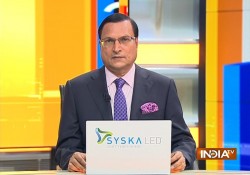
India-China Understanding: Much to learn for the West
 This year’s Diwali will be a different one for our brave jawans and officers deployed near the Line of Actual Control in eastern Ladakh. Nearly 50 per cent of troop disengagement has been completed in Depsang and Demchok by Friday evening, and the Indian Army plans to begin patrolling in coordination with the Chinese army in the two areas by October-end. Talks are going on over issues like ‘buffer zones’ which had been created earlier in the region with high altitude.
This year’s Diwali will be a different one for our brave jawans and officers deployed near the Line of Actual Control in eastern Ladakh. Nearly 50 per cent of troop disengagement has been completed in Depsang and Demchok by Friday evening, and the Indian Army plans to begin patrolling in coordination with the Chinese army in the two areas by October-end. Talks are going on over issues like ‘buffer zones’ which had been created earlier in the region with high altitude.
The disengagement in Depsang and Demchok will be over by October 28 or 29, and the patrolling from both sides, with prior intimation to avoid face-offs, will begin after mutual verification. Dismantling of temporary posts, sheds, tents and other structures and pullback of troops in Depsang and Demchok to pre-April 2020 position is going on and is being closely monitored both on the ground and from the air by using drones.
In Demchok, Indian troops are moving back towards the west from Charding Nullah, while Chinese army has withdrawn some of its vehicles after dismantling nearly a dozen temporary structures.
Two days ago, Prime Minister Narendra Modi and Chinese President Xi Jinping had discussed the border issue and it was decided to resume Special Representative level talks on solving the vexed India-China border dispute. Till last week, nobody could have imagined that troops of both sides would resume patrolling near the friction points in Ladakh so soon, and a tension-free Diwali would be celebrated by our brave jawans.
Prime Minister Modi had been roundly criticized by our opposition leaders for the last two years over the Ladakh border tension issue. Opposition leaders had been alleging that China has occupied a large part of our territory in Ladakh and Modi has “surrendered” before the Chinese. Modi never replied, nor got provoked over these allegations.
Modi preferred to work silently, used diplomatic techniques and displayed military power. He was neither in awe of the Chinese, nor did he bow down. I think Modi might have used the good offices of his friend Russian President Vladimir Putin for improving relations with China. It suits Putin if India and China join hands, and appear to stand with Russia.
Putin can then claim before the West that Russia is now a major power that is not isolated from the rest of the world. Those who have been making fun of Modi and asking questions on when he would show his “red eyes” at China, will now have red eyes.
If India-China relations improve, it will be a pain in the neck for Rahul Gandhi. Rahul will then realize that he made a mistake in trusting the Chinese more rather than believing in Modi’s claim.
The world is today abuzz with talks about the rapprochment between India and China and how the border issue in Ladakh was resolved through bilateral talks. This can be shown as an example to the European Union and other Western powers on how to bring an end to the ongoing conflicts in Ukraine and Middle East.
Determined India, China’s compulsion : Deal done
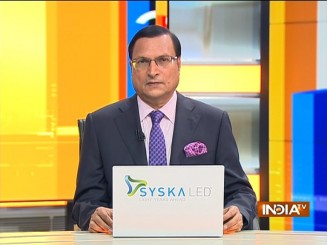 Prime Minister Narendra Modi and Chinese President Xi Jinping on Wednesday put their seal of approval on the agreement between India and China on resuming patrolling near the friction points in eastern Ladakh. The two leaders also decided to resume Special Representative level talks to iron the vexed India-China boundary dispute. These talks have not taken place since 2019, when tension flared up in Dokalam and Ladakh. Both the leaders decided to take relations forward from a “strategic and long-term perspective, enhance strategic communication and explore cooperation to address developmental challenges.”
Prime Minister Narendra Modi and Chinese President Xi Jinping on Wednesday put their seal of approval on the agreement between India and China on resuming patrolling near the friction points in eastern Ladakh. The two leaders also decided to resume Special Representative level talks to iron the vexed India-China boundary dispute. These talks have not taken place since 2019, when tension flared up in Dokalam and Ladakh. Both the leaders decided to take relations forward from a “strategic and long-term perspective, enhance strategic communication and explore cooperation to address developmental challenges.”
The immediate outcome of the bilateral meeting could be that India would soon reopen its doors for Chinese investment, which Xi Jinping needs badly. But the pace of reopening investment shall depend on what happens on the ground in Ladakh and whether Chinese army implements the agreement sincerely. It was also decided in Wednesday’s summit meeting that India and China’s special representatives will discuss resuming Mansarovar pilgrim yatra.
External Affairs Minister S. Jaishankar, National Security Adviser Ajit Doval, Foreign Secretary Vikram Misri and India’s Sherpa at BRICS Dammu Ravi were present with PM Modi at the meeting, while the Chinese President was assisted by Foreign Minister Wang Yi and Chinese Communist Party secretary Cai Qi.
Before the meeting began, Prime Minister Modi said, “mutual respect, mutual trust and mutual sensitivities” were essential for moving forward in bilateral relations. President Xi said, both India and China were two big economic powers and they should present an example of friendship to the rest of the world. Jinping said, both India and China want a multi-polar world and end Western hegemony.
The meeting between Prime Minister Modi and President Xi is an important one and it has ended five years of tense deadlock. One needs to revisit the background in which India-China friendly relations went on a downward spiral because of tension near LAC.
In Dokalam near the Bhutan border, when Chinese troops confronted the Indian army, our brave jawans stood their ground for 72 days and did not allow the Chinese troops to move an inch forward. China again broke mutual trust, when its army ignited tension in Ladakh. It built big infrastructures on its side of the border which posed a security risk for India. India became active on a war footing, built roads, bridges and tunnels near the border at breakneck speed and under PM Modi’s instructions, made mirror deployment of its troops to match Chinese buildup. It was then that the Chinese strategists realized that this was a new India, which was not going to be browbeaten.
In the last three years, Chinese army did not make any big transgression, and instead, sent feelers for resumption of trade and investment, even as talks on reducing border tension was going on. The downslide in investment and trade also affected Indian industrial sectors like electronics, pharma and chemicals, which were dependent on China for procuring raw materials.
Despite facing losses, India stood its ground saying that until and unless there is agreement on the border standoff, talks on other issues cannot be reopened. India did not bow despite economic losses. Ultimately, China understood and Indian diplomacy succeeded.
After several months of talks, China agreed for patrolling deal to be followed by disengagement. By reaching a deal, India and China have told the rest of the world that they were moving forward to normalize relations. Prime Minister Modi’s personal friendship with Russian President Vladimir Putin helped in bringing about agreement.
Though such intervention are never admitted officially, one point is clear: India has told the world that it shall never compromise with its self-respect in any situation. This was underlined by PM Modi at Wednesday’s bilateral, when he said that peace and stability on the border was a top priority for both countries, but, in the next sentence, he said, that “mutual trust, mutual respect and mutual sensibilities” were of essence for improving relations. Modi’s message is clear: India wants good relations with its neighbours, but it will never compromise on the issue of self-respect.
India-China Bhai Bhai: Welcome, but be careful
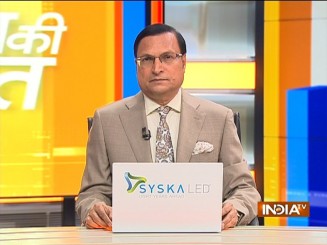 A day before Prime Minister Narendra Modi was due to have a first bilateral meeting in five years with Chinese President Xi Jinping in Kazan(Russia), a Chinese foreign ministry spokesman in Beijing confirmed that India and China have “reached a solution on relevant matters” (in eastern Laddakh). He said, China would work with India to implement it, but declined to provide details.
A day before Prime Minister Narendra Modi was due to have a first bilateral meeting in five years with Chinese President Xi Jinping in Kazan(Russia), a Chinese foreign ministry spokesman in Beijing confirmed that India and China have “reached a solution on relevant matters” (in eastern Laddakh). He said, China would work with India to implement it, but declined to provide details.
Indian Foreign Secretary Vikram Misri had announced on Monday that both the countries have agreed on patrolling arrangements following negotiations to end the four-year-long standoff. Misri expressed hope that this may lead to eventual disengagement of armies deployed on both sides of Line of Actual Control and eventually a resolution of disputes that arose in 2020.
Details of the agreement that are unofficially available show that Indian and Chinese troops can now patrol within their borders in Depsang Plains and Demchok. Troops of both countries can patrol their areas twice a month. To avoid any chance of confrontation, each patrolling team on both sides will not have more than 15 soldiers. Troops of both countries can patrol by staying 200-300 metres away from LAC.
Under the agreement, Indian and Chinese army commanders will coordinate between each other before sending their patrolling parties. The objective is to avoid recurrence of confrontation that had taken place in Galwan valley in May 2020, when 20 Indian soldiers were martyred and a large number of Chinese troops were killed. In July, 2020, both armies had disengaged in Galwan and Hot Springs, and in 2021, they had withdrawn their troops in Gogra and Pangong Tso. But both troops are still locked in a close confrontation for the last four years in Depsang Plains and Demchok border points. Now, the agreement also covers both these areas.
In Depsang, Indian troops can patrol upto Point 10 and Point 13, which had come to a standstill during the last four years. Chinese army will withdraw its troops from Depsang and dismantle its sctructures.
According to the agreement, troops of both countries will withdraw from LAC during winter, and for better coordination, commanders of both sides will have meetings every month. Though official details are not available, one must understand the broad meaning behind this agreement.
One, Chinese troops will return from those areas they had occupied four years ago, and the status quo situation of April, 2020, will be restored. A plan has been prepared for resolving the border standoff that has created tension. Two, the adverse effects on India-China bilateral trade that had taken place following the border standoff, will now end in a phased manner. There are many industrial sectors in India that are dependent on raw material procurement from China. These sectors can now heave a sigh of relief. Three, Congress leader Rahul Gandhi had been frequently raising the China border issue at his public meetings, while AIMIM chief Asaduddin Owaisi had been alleging that Chinese troops have occupied Indian territory. These leaders will now lose an issue that they have been raising frequently. Four, it seems that Russian President Vladimir Putin played an important role behind the scenes to bring about a reduction in tension between Modi’s India and Jinping’s China. India and China are the founder members of BRICS group. By ending tension on the border, they have conveyed an important message to those parts of the world which are facing conflicts. For example, Ukraine and Middle East.
In his bilateral meeting with President Putin on Tuesday, Modi stressed on the point that “war cannot be a solution for any dispute and solution can be arrived at only through negotiations”.
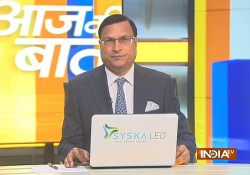
Beware of Chinese garlic : A slow poison
 The Lucknow bench of Allahabad High Court has directed the UP Food Safety department to probe how banned Chinese garlic, that is considered harmful for health, is still available in markets. This was in response to a public interest litigation filed by a lawyer complaining that Chinese garlic is still being sold in markets despite the Centre clamping a ban on its import. Chinese garlic is considered a slow poison, because of excessive use of pesticide. The Food Safety department has sought two weeks time to test Chinese garlic in food lab and give its report.
The Lucknow bench of Allahabad High Court has directed the UP Food Safety department to probe how banned Chinese garlic, that is considered harmful for health, is still available in markets. This was in response to a public interest litigation filed by a lawyer complaining that Chinese garlic is still being sold in markets despite the Centre clamping a ban on its import. Chinese garlic is considered a slow poison, because of excessive use of pesticide. The Food Safety department has sought two weeks time to test Chinese garlic in food lab and give its report.
The High Court directed that a Helpline WhatsApp number be issued in public interest so that people can send their complaints. Garlic is normally recommended for use by Ayurvedic doctors and dieticians, but the issue of banned Chinese garlic being sold in Indian markets is a case for worry. Earlier, there were controversies involving Chinese fake rice, Chinese fake eggs and Chinese fake noodles. All these products were declared harmful for health. China is the world’s largest garlic producer but its farmers use excessive pesticide to grow garlic. It is grown inside septic tanks, and there have been frequent reports of fungus being found in Chinese garlic. In Ayurveda, garlic is considered a medicine to enhance immunity for those suffering from blood pressure. One can well imagine what patients will face if they consumer Chinese garlic considered as slow poison. Let me share some tips with you about how to differentiate between Indian and Chinese garlic.
Indian ‘desi’ garlic are smaller in size, while Chinese garlic pods are bigger. ‘Desi’ garlic pods are slim and long. Chinese garlic look completely white, while ‘Desi’ garlic pods are yellowish. Chinese garlic have less smell, while ‘desi’ garlic pods have a strong smell. It is easier to remove the covering of Chinese garlic pods, while ‘desi’ garlic pods have several peels of covering and it takes longer to take out the pods. If you buy garlic from market, be careful to differentiate the Indian garlic from the Chinese one. The Chinese garlic may look cheaper while Indian garlic may cost more. My advice to all of you is: Do not be swayed by cheaper Chinese garlic.